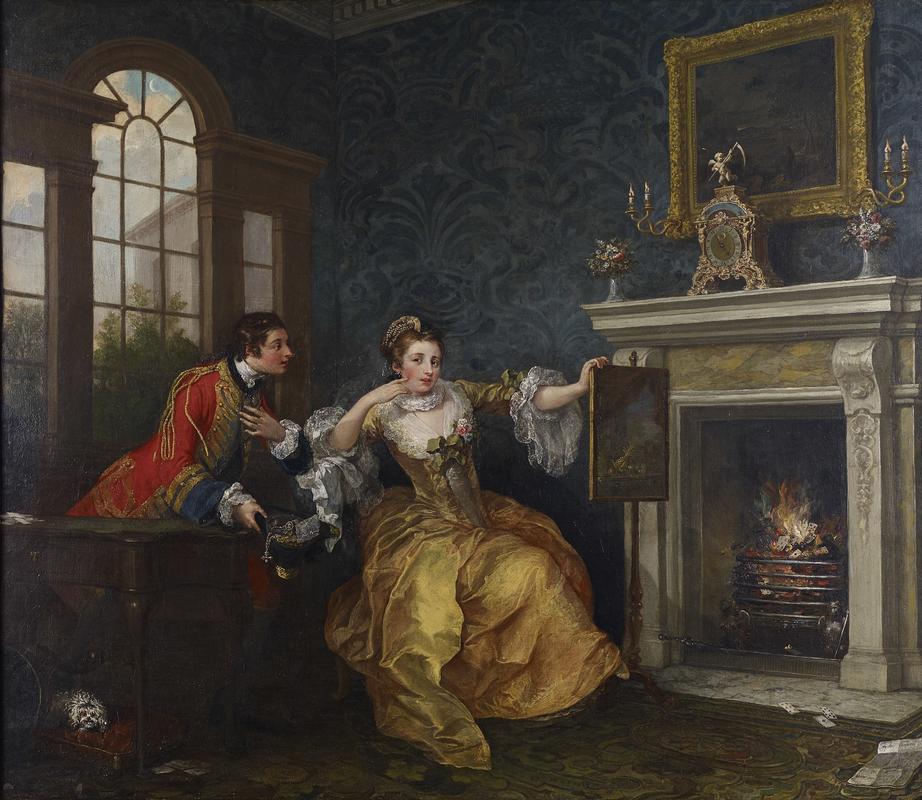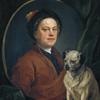More about The Lady's Last Stake

Sr. Contributor
William Hogarth always got the job done, but not without a jab at those who deserved it most.
My favorite artists are always those who moved in the circles of the rich and famous but didn’t take any of their bougie sh*t. William Hogarth is definitely one of those guys, and I’m starting to think that Francisco Goya might have taken a page out of his book. Goya’s Charles IV of Spain and His Family is hilarious because it shows the Spanish royal family for what they really were (a bunch of dummies). Similarly, Hogarth’s The Lady’s Last Stake shows what Hogarth really thought of the United Kingdom’s aristocracy (also a bunch of dummies).
From an early age, Hogarth knew that he wanted to be an artist but that he had to find a way to remain independent from the printers and booksellers who had robbed his father and put him in prison for being in debt. Although he was starting to become an independent artist who didn’t need no patron, he led a bit of a double life. The allure of being rich and famous was too much for Hogarth to bear, so while he made and sold his own prints and paintings about the moral failings of contemporary British society, he also started to accept commissions from the upper class.
Hogarth knew that these guys liked to get a little frisky. When James Caulfield, the Earl of Charlemont, commissioned a work from Hogarth of the artist’s own choice, Hogarth decided to roll with it. Hogarth couldn’t do Caulfield dirty, though. Caulfield was friends with tons of important people, like artist Joshua Reynolds, philosopher David Hume, and King George III. We know he was powerful and cultured AF. He was also a little bit dirty and liked art that showed it off in a subtle way.
Hogarth, the sly man that he was, was able to do two things with this painting: please the customer by honoring the commission, but also reveal that the English aristocracy was really into sex, gambling, and tricking people into getting what you want (it's more sex). These must have been popular themes in eighteenth-century England because Hogarth’s painting is based on a 1708 play of the same name. The painting’s full name – Piquet: or Virtue in Danger (The Lady’s Last Stake) – reveals more of the painting’s juicy backstory. Piquet is an English card game that dates to the early 1500s and is all about tricking the other person. The idea of trickery is central to this painting, as the man in red (a soldier, no less!) has just conned the lady into losing her whole fortune, which he conveniently holds in his hat. The soldier tempts the aristocratic woman with one last game with even higher stakes: if she wins, she gets all of her jewels and money back, but if she loses, she must take him as her lover. Pretty dastardly if you ask me. Lady Gaga would not be impressed with this woman’s poker face, though, as she seems pretty keen on the terms of the bet. As with many of Hogarth’s narrative paintings, this work is one part funny story, one part moral lesson, and one part ridiculing the vices of the aristocracy.
Sources
- Carnegie Mellon University. “To Play Piquet.” http://www.cs.cmu.edu/afs/andrew/org/Medieval/www/src/contributed/grm/g…. Accessed May 9, 2017.
- Kitson, Michael. “Hogarth, William.” Oxford Art Online. http://www.oxfordartonline.com/subscriber/article/opr/t118/e1219. Accessed May 9, 2017.
- Library Ireland. “James Caulfield Earl of Charlemont.” From A Compendium of Irish Biography. http://www.libraryireland.com/biography/JamesCaulfeildEarlofCharlemont…. Accessed May 9, 2017.
- O’Connell, Sheila. “Hogarth, William.” Oxford Art Online. http://www.oxfordartonline.com/subscriber/article/grove/art/T038499. Accessed May 9, 2017.
- Tate Britain. “Hogarth: Room guide, room 6.” http://www.tate.org.uk/whats-on/tate-britain/exhibition/hogarth/hogarth…. Accessed May 9, 2017.
Featured Content
Here is what Wikipedia says about The Lady's Last Stake

The Lady's Last Stake, originally entitled Piquet: or Virtue in Danger, is a painting by William Hogarth, c. 1759. The work is a conversation piece, capturing the moment when the woman has to make a fateful decision: to be ruined financially, or morally. It was one of Hogarth's last works, commissioned by James Caulfeild, 4th Viscount Charlemont (later 1st Earl of Charlemont), who allowed Hogarth to select the subject and price.
The painting depicts a domestic scene with a man and a woman who have been gambling, playing piquet at a table near an open fire and in front of a Venetian window in a well-appointed Palladian mansion. The woman has just lost her fortune to the man, an army officer. He offers to play one more game of cards: either way, he will return her assets, including the money and jewels in his tricorne hat; but if she loses, she must accept him as her lover. The woman clasps the edge of the fire screen as she considers his offer. The woman may be modelled on Hogarth's acquaintance Hester Salusbury (later Hester Thrale and then Hester Piozzi). On the floor is a discarded letter from her husband sending her money; it is addressed to Charlotte and signed Townly.
Details in the painting allude to the woman's fateful decision. A small dog (representing faithfulness) is hiding under the table. There is a painting of a Penitent Magdalene over the fireplace. The mantelpiece bears a clock with the usual figure of Father Time replaced by Cupid, but still carrying a scythe; the clock bears the motto "nunc nunc" (Latin: "now now"). The clock shows the time as 4:55 pm, and the horns of a crescent moon (alluding to the horns of a cuckold) are visible above the garden outside. The cards are being burned in the fire.
The work measures 91.44 by 105.41 centimetres (36.0 in × 41.5 in). It became known as The Lady's Last Stake after the 1707 comedy play The Lady’s Last Stake (subtitled "The Wife's Resentment") by Colley Cibber, in which Lady Gentle loses money to the cheating Lord George Brilliant, and must decide whether to pay her debts or settle them by compromising her fidelity to her husband.
When Sir Richard Grosvenor (later 1st Baron Grosvenor and then 1st Earl Grosvenor) saw the painting in Hogarth's studio in 1758, he asked Hogarth to paint a picture for him too on the same terms. Grosvenor was surprised by the result, the ambitiously melodramatic Sigismunda mourning over the Heart of Guiscardo, and Grosvenor rejected the painting when it was finished in 1759.
Charlemont accepted his painting, but permitted Hogarth to retain it for a period so he could engrave it. Hogarth was unhappy with the result, and it was discarded and not published. The work was exhibited at the Society of Artists inaugural Exhibition of 1761, and later engraved more successfully by Thomas Cheesman.
The painting was hung in the similarly Palladian style Charlemont House in Dublin, until it was sold by the family in 1874. The prominent positioning of an architectural set-piece by Hogarth in a Venetian window may have been in deference to the Earl, who had a particular love for neo-classical architecture and had recently returned from a Grand Tour of Europe at the time of the painting's commissioning.
It went through the hands of the art dealers Louis Huth and Thomas Agnew & Sons. It was acquired by J. P. Morgan in 1900, and was donated to the Albright-Knox Art Gallery by Seymour H. Knox, Jr in 1945.
Check out the full Wikipedia article about The Lady's Last Stake












